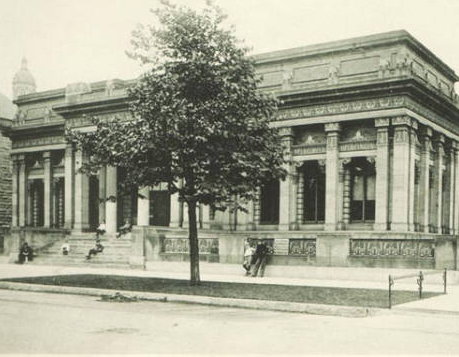 |
We've built our cities in the blink of an eye in geological time. We've regraded terrain, straightened rivers, dredged harbors, and moved neighborhoods to make room for the automobile. We've become better at it - more organized and efficient and capable with bigger and bolder machines at our disposal with which to make changes. Then, upon the terraformed ideal, we've built structures, demolished structures, and built new structures in their place. Structures have changed owners and activities have varied within the walls.
|
|
3-D Web History |
Building Virtual Cities |
Viewing Virtual Cities |
Virtual Cities History |
Historical Preservation |
More Links...
Our virtual cities can capture these changes and provide an exploratory adventure experience to those who wish to go back in time to see how a city appeared in a year gone by. Our historical preservation societies can work to tell the history of preserved buildings and expand to buildings that no longer exist. They can exist as virtual models in our virtual cities that on-line visitors can investigate from all visual angles. We can build interfaces that let us fly through time at a rate of our choice, seeing the growth of our cities from more natural landscapes to manmade marvels. The rush of development brought on by the end of war. The major changes brought on by new popular transportation choices or waves of immigrants with their preferred architectures and community establishments.
| |
|
Consider the benefit a virtual city project could provide the reader of a well-written historical document like the History of Smith Hill. The reader gets a strong sense of the growth of a neighborhood through well-defined waves of change to the community. He sees pictures of representative homes and considers the magnitude of each consideration. But, what exactly was there before each wave and how quickly did each wave flow through? A virtual city with time manipulation interaction lets a reader supplement well written documents with visual support that answers questions beyond answers available in the pages.
We can start now by capturing the city as it exists today. We capture it once and it is available for all time going future. We start committing to capturing changes moving forward and chip away at recreating our structures of the past as virtual models. We build a community process where great-grandma's pictures are investigated to verify the homes she lived in and the places she visited. We offer our virtual cities up to others for review and build a community language for what we like and don't like our cities to be by exploring ours and theirs. We teach everyone who is interested to participate in generating models and we build an optimal review process for organizing the content into official and unofficial descriptions. By doing so, we span a continuum from physical space to cyberspace and make the transition less abrupt. We also give due appreciation to our ancestors and become more understanding of the lives they lived. By doing so, we slow down the bewildering aspects of change by keeping a coherent perspective on the its emergence in our community. |  |